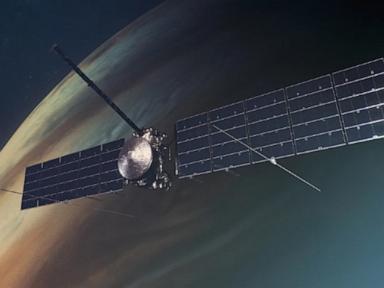
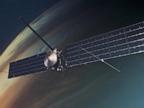

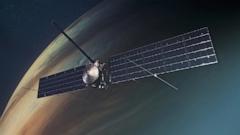
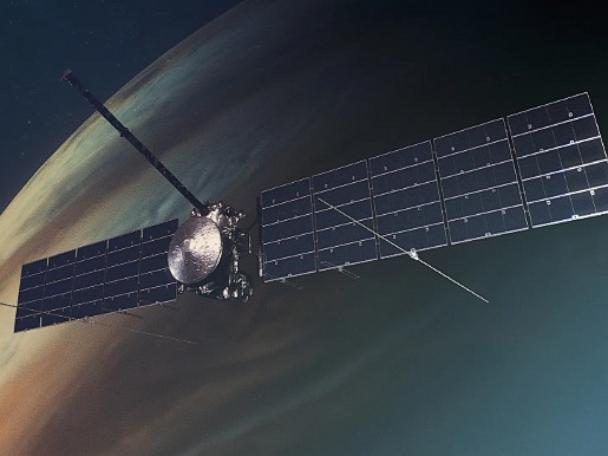
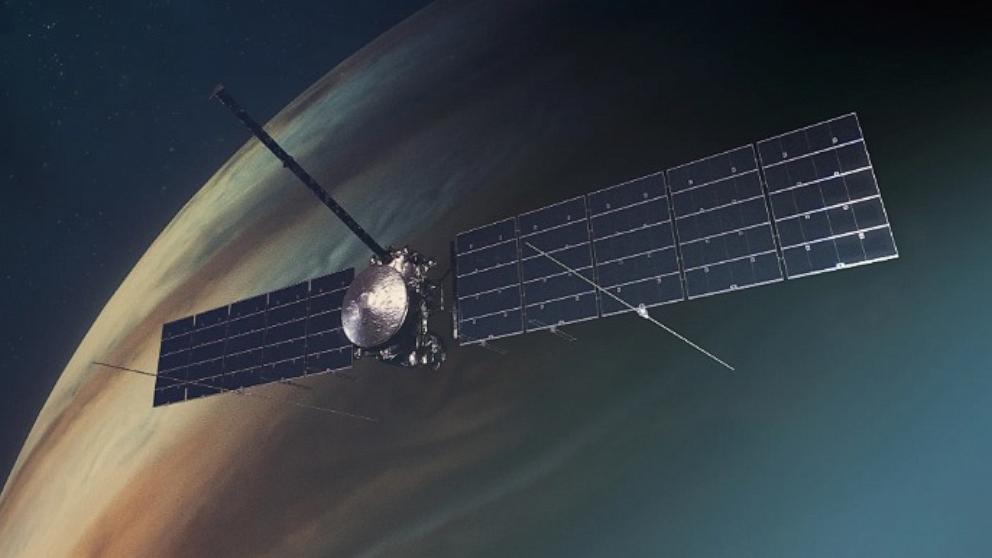
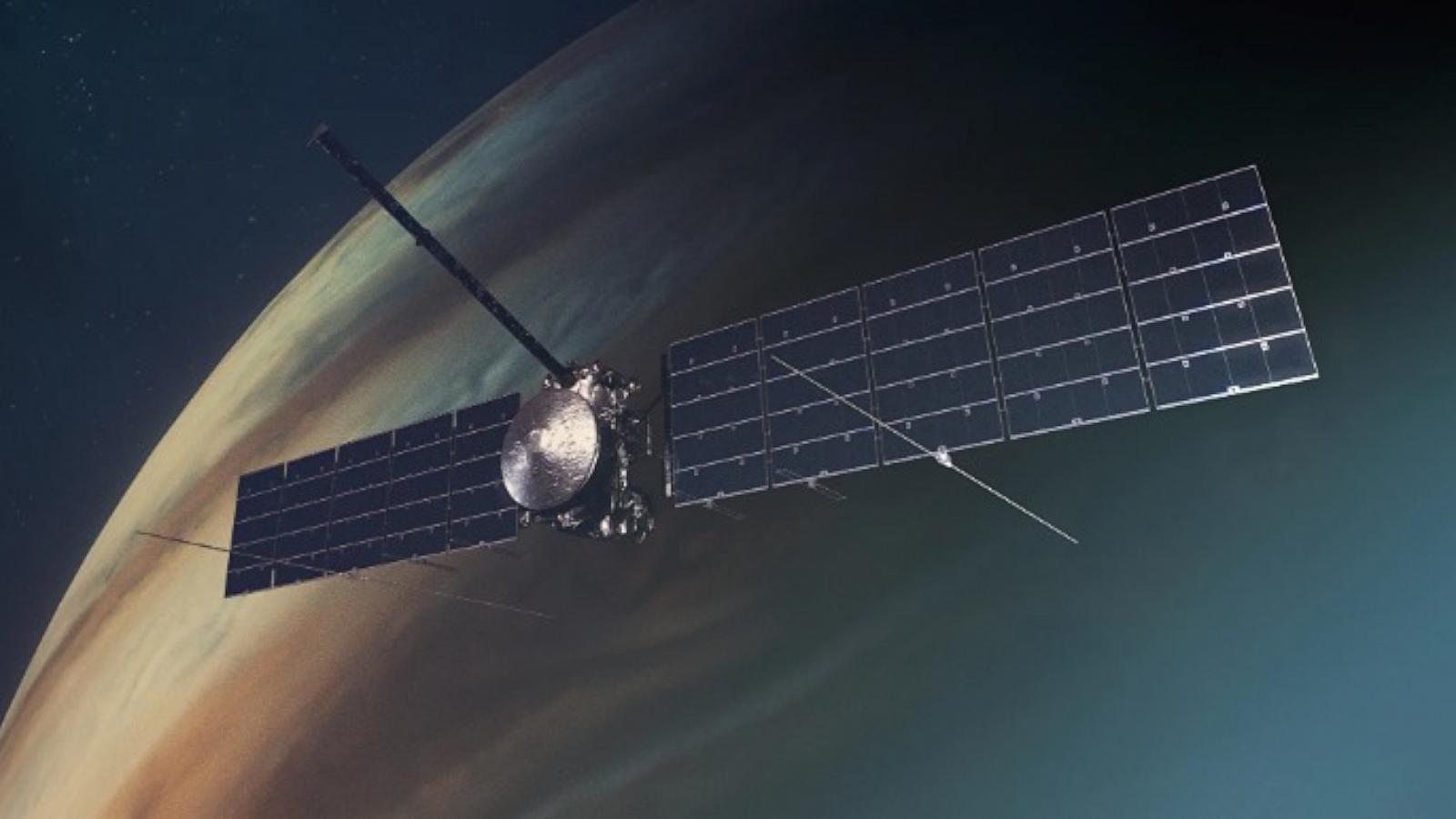
Marking the latest foray into space exploration, NASA is preparing to launch its first mission to explore Jupiter’s moon, Europa, to determine if it harbors conditions suitable to support life.
NASA’s Europa Clipper is set to launch on Oct. 10 from NASA’s Kennedy Space Center in Florida and will be carried into orbit on SpaceX’s Falcon Heavy rocket, according to the agency.
The agency will invest approximately $5.2 billion in the entire life of the mission, which spans nearly two decades, beginning in 2015 and ending in 2034, according to a press release from NASA’s Jet Propulsion Laboratory.

This image provided by NASA shows Jupiter’s moon Europa captured by the Juno spacecraft, Sept. 29, 2022.
NASA/AP, FILE
Europa is the fourth largest of Jupiter’s 95 moons, and planetary scientists believe this unique moon harbors a salty ocean beneath its icy crust.
NASA says the mission aims to answer the question: Does the global, subsurface ocean contain the organic compounds and energy sources necessary to sustain life?
“As an ocean world, Europa is very intriguing,” Gina DiBraccio, director of NASA’s planetary science division, said during a press briefing this month.
“This mission is going to help us to understand a complex piece of our solar system,” DiBraccio added.
NASA’s 100-foot-long and approximately 58-foot-wide Clipper probe is the largest spacecraft the agency has built for a planetary mission and will travel 1.8 billion miles to Europa.
The sizeable spacecraft was built with large solar arrays to collect enough light for its power needs as it operates in the Jupiter system, according to the agency.
The journey to Europa is long, with the flight there spanning roughly five and a half years. NASA says the spacecraft will fire its engines to enter orbit around Jupiter in April 2030.

This artist’s concept depicts NASA’s Europa Clipper spacecraft in orbit around Jupiter. The mission is targeting an Oct. 10, 2024, launch.
NASA
Once there, the spacecraft will conduct nearly 50 flybys of the planet at “closest-approach altitudes” as low as 16 miles above the surface to gather detailed measurements of the planet’s environment, according to NASA.
Throughout the mission, the spacecraft must fly through one of the “most punishing radiation environments in our solar system — second only to the Sun’s,” according to NASA.
The reason the environment is so challenging is that Jupiter is surrounded by a magnetic field that is 20,000 times stronger than Earth’s.
When the field spins, NASA reports, “it captures and accelerates charged particles, creating radiation that can damage the spacecraft.”
Because of this, the Europa Clipper is designed to shield sensitive electronics from radiation, and NASA researchers designed the spacecraft’s orbits to limit exposure to the most radiation-heavy areas around Jupiter.
If successful, the agency reports the mission will end in June 2034.

